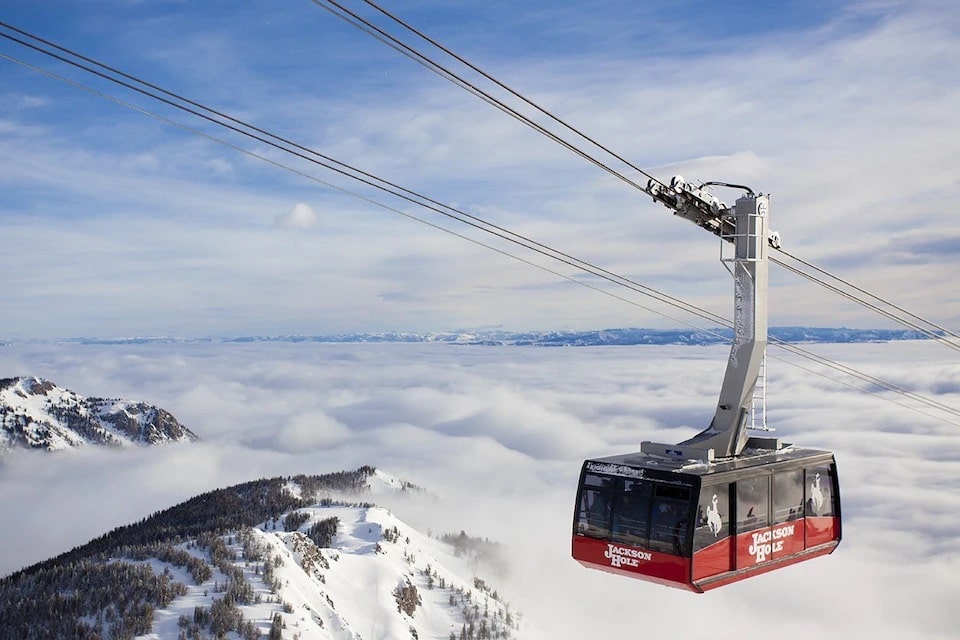
Every ski area has its own unique story and heritage. From its initial founding to how it evolved into what it is today, each with its own stories and characters who helped pave the way.
The rich history of Jackson Hole Mountain Resort is no different. From owners to lifts, terrain, hotels, restaurants, shops, and more, the resort has long evolved and seen its fair share of changes since its inception. Although covering every detail of the story of this iconic ski resort would make for a remarkable read, it would demand a novel worth of text, so we’ll keep it concise as we take a trip down memory lane for a history of Jackson Hole Mountain Resort.
The Dream
The current location of JHMR was home to the Crystal Springs Girl Scout Ranch which opened in 1947 and operated as an equestrian-focused summer camp for girls ages 10 to 14. Paying roughly $1,355 an acre, the land at the bottom of Rendezvous Mountain was purchased in 1961 by Paul McCollister. McCollister, a Stanford University alumni with degrees in sociology and economics, would eventually align Jackson Hole’s famous cardinal red branding to his alma mater.
Paul McCollister was a retiree who, after a successful career in radio advertising, spent a year skiing the world-famous resorts of Europe and working as a gentleman rancher on a 390-acre spread in Teton County. He would go on to become President of the Jackson Hole Ski Club and Chairman of the Jackson Hole Corporation, a local group dedicated to researching ski area development.
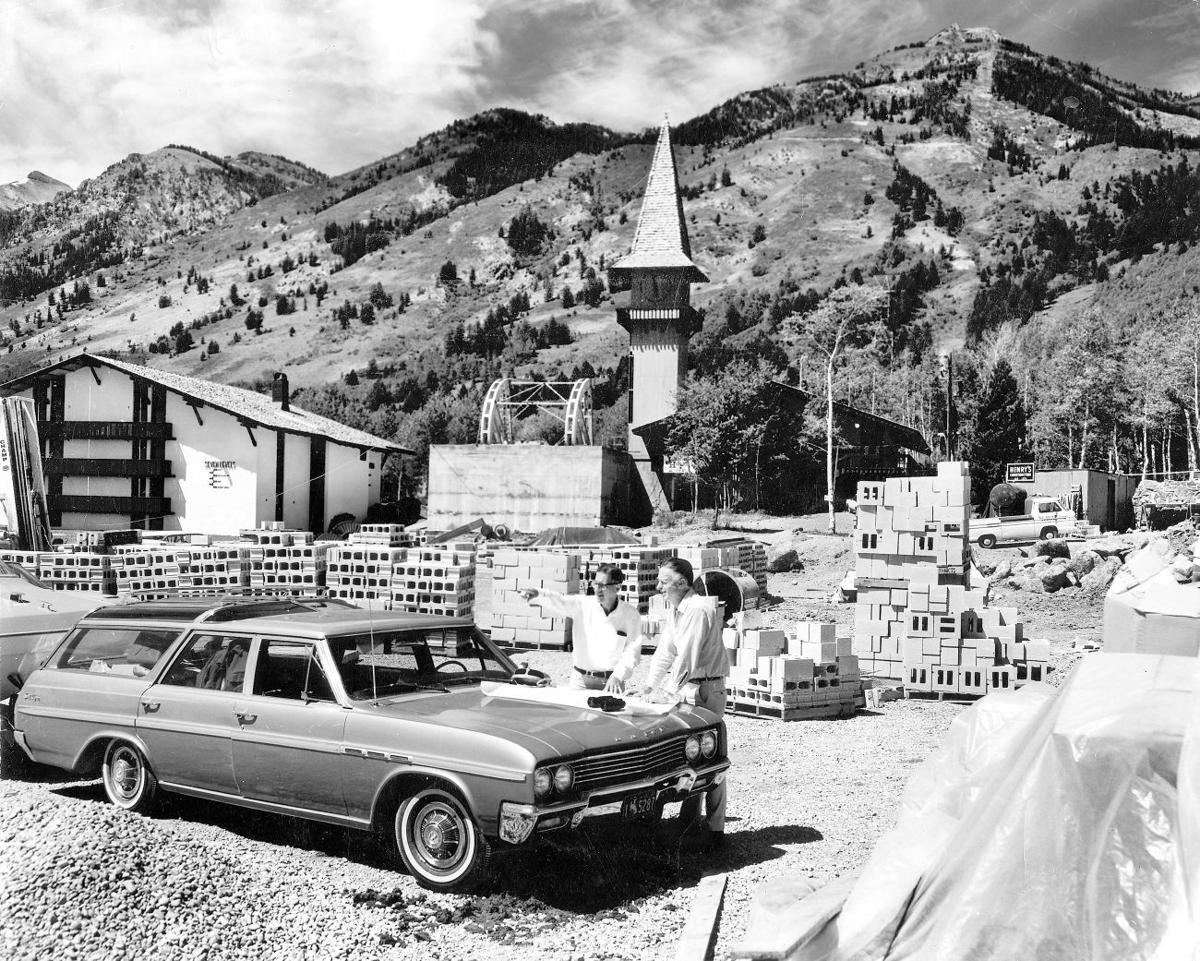
McCollister purchased the land with the help of his partners Alex Morley, a successful general contractor from Cheyenne, and Gordon Graham, a former business associate from California. The three, who knew nothing about starting a ski resort, formed the Jackson Hole Ski Corporation in 1963 after a detailed study had confirmed Rendezvous Mountain as a prime location for a ski area. Their vision was to transcend the European ski model by building a 2.5-mile aerial tramway connecting the plush valley floor to the Teton skyline.
Jackson Hole was founded on a simple but bold idea: having the courage and conviction to follow your dreams. Morley once said, “It was going to be the best ski area in the world.” The trio pursued the project with tenacity and determination. However, the development would prove to be anything but easy and they were tasked with taming a mountain like no other.
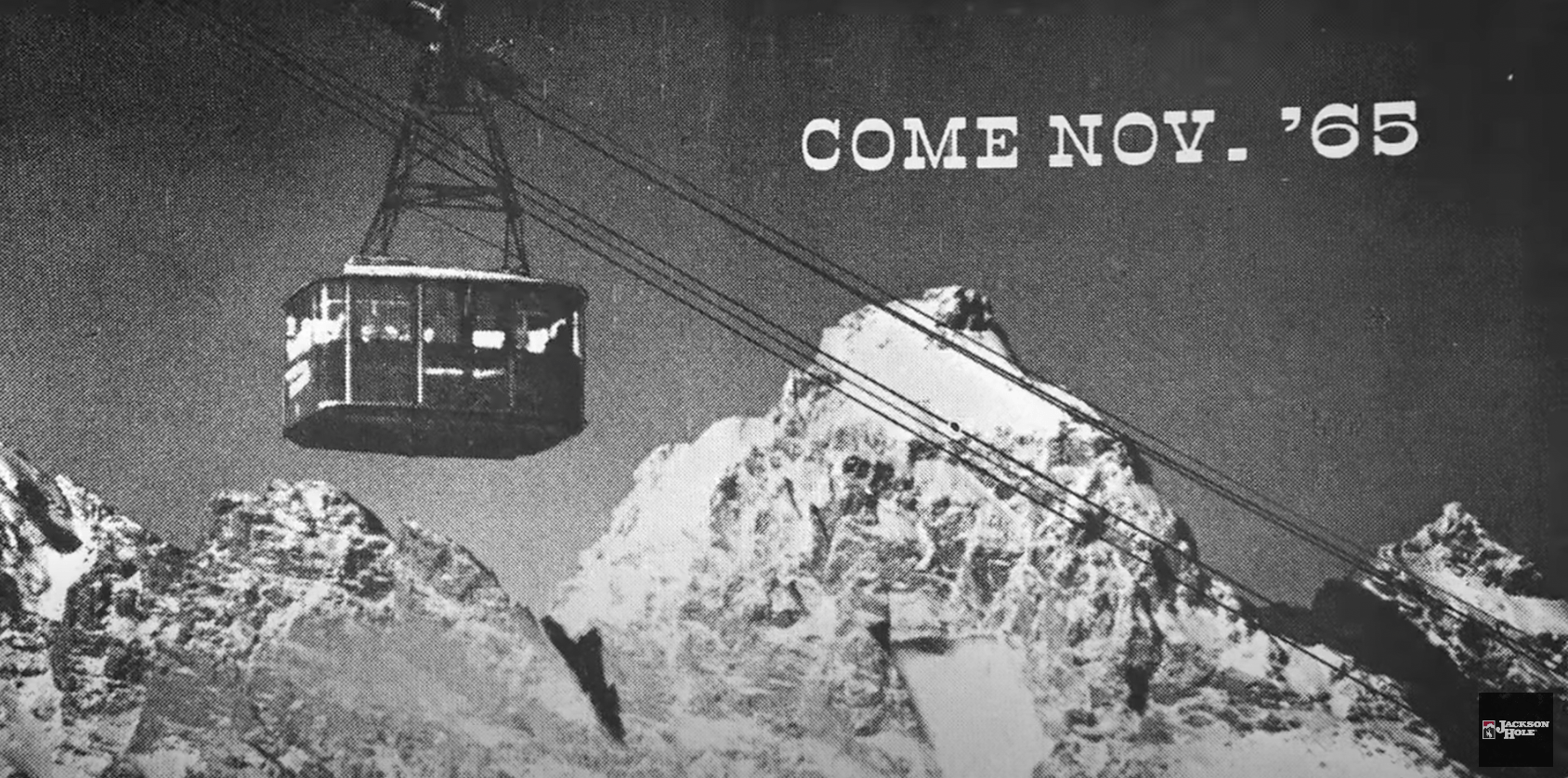
The Early Years
Construction of Jackson Hole Moutain Resort commenced during the Spring of 1964, including the original Aerial Tram. Apres Vous mountain opened to the public for the 1965-66 winter season with 3 double chairlifts: Eagles Rest, Teewinot, and Apres Vous. The summer of 1966 initiated the inaugural trip of The Jackson Hole Aerial Tram, shuttling guests to the top of Rendezvous Mountain. It held 63 people and one conductor, taking just over 9 minutes to reach the summit at 10,450 feet.
The following winter of 1966/67, the Aerial Tram officially opened to the public for skiing in December, kicking off the start of the season. With the season officially underway, McCollister sought a world-class skier to lead the ski school program and signed Pepi Stiegler of Austria, a 1964 slalom gold medal winner. Stiegler was hired as ski school director of JHMR and several national ski races and competitions would be held at Jackson Hole in the following years.
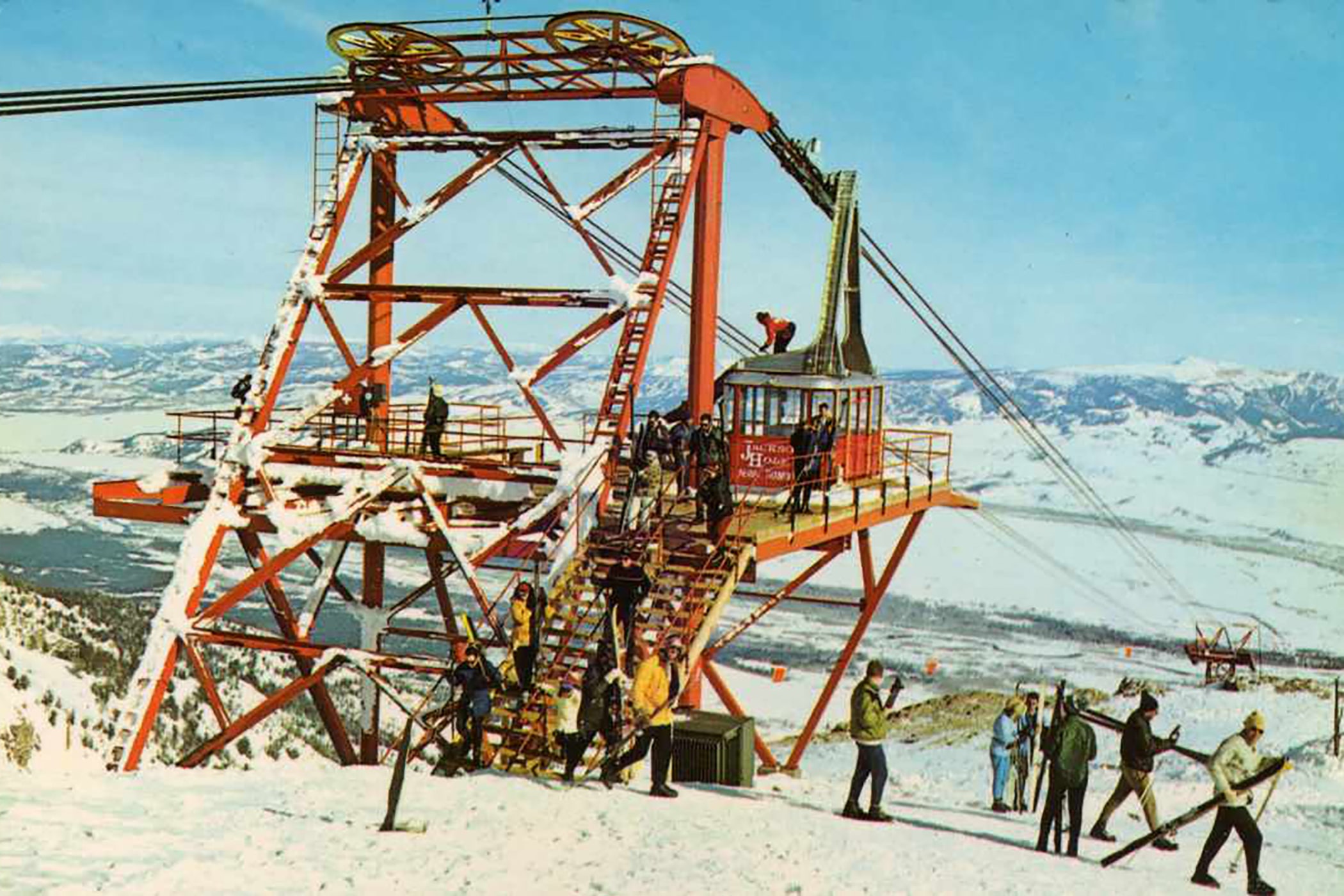
That season, Ski Patroller Dick Porter survived a 55-minute burial from an avalanche in the steep gully that would later be famously named Dick’s Ditch. During the 1967 season’s final International ski race dubbed the Wild West Classic, Jean-Claude Killy of France and Nancy Green of Canada were crowned as that year’s world champions. Jean-Claude was quoted by Sports Illustrated stating, “If there is a better ski mountain in the United States, I haven’t skied it.” The resort would go on to host the first National Powder 8 Championship in 1970.
The early eras of the mountain resort were bathed in cult status. Rendezvous Mountain was about going beyond the predetermined experiences found at North American ski resorts. Jackson Hole Moutain Resort was meant to be a place for adventurers to cut their teeth, test their wits, and push the limits of inbounds skiing like it’s never been done before. It was all that and more, but business wasn’t booming. Tough times were faced in the early days and McCollister, a fearless leader backed by his team, did anything he could to survive year to year, from selling lifetime ski passes to furniture out of his apartment.

The Crossroads
After years of slow growth and a few new lifts being added, the resort installed the Thunder double chair in 1970. The 3,800-foot-long lift took skiers from mid-mountain to a few hundred feet below the summit providing easier access to the central mountain between the tram and Apres Vous lift.
By the mid-1980s, Paul McCollister’s business model had been realized, but it still lacked the lifeblood it needed to survive: the numbers. There’s no business like the snow business. Although, beloved by hardcore skiers and adventurers alike, revenue was lacking and the resort was a hard sell to resort enthusiasts. Fair-weathered skiers strayed away as the mountain was marketed as a steep, rocky, and a wild Wyoming experience. The resort was at a crossroads: Jackson Hole needed to grow if it was going to survive.
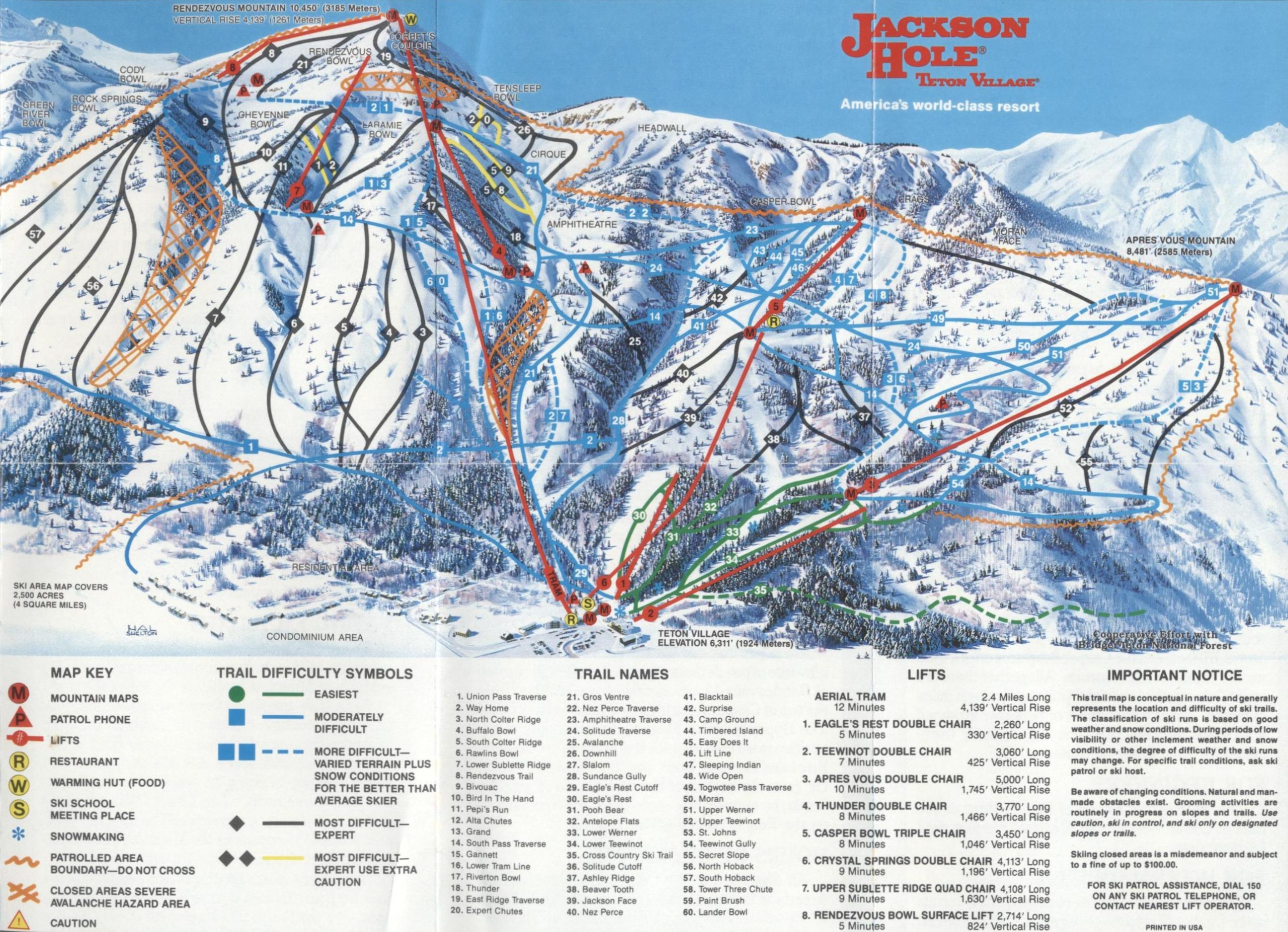
The Acquisition
In order to see success, Jackson Hole needed a team to take its ambitious idea and elevate it to the world stage. Enter the Kemmerer Family. A mining family who had been successful in the coal industry for over 100 years with a history in the state and even a town that bears their name. The Kemmerers were all too familiar with the harsh environments of beautiful Wyoming. In 1992, McCollister sold Jackson Hole Ski Corp. to the Kemmerer siblings, Connie, Jay, and Betty who, after selling off their coal empire, wanted to invest back into the state of Wyoming. The family would maintain sole ownership—a rarity in the world of ski resorts.
- Related: Jackson Hole Mountain Resort, WY, Owner Donates to Political Candidate Who Opposes Climate Action
That year, the Kemmerers swiftly took action and upgraded the Thunder Chair from a double to a quad, and appointed John Resor as President of Jackson Hole Ski Corporation. With a lack of infrastructure and lifts, the job would be an uphill battle. By 1997, the family-friendly Teewinot beginner lift was upgraded to a high-speed quad, dramatically improving the mountain experience for beginners and intermediates. The Après Vous chairlift was upgraded to a high-speed detachable quad and increased uphill capacity to 2,000 skiers per hour.
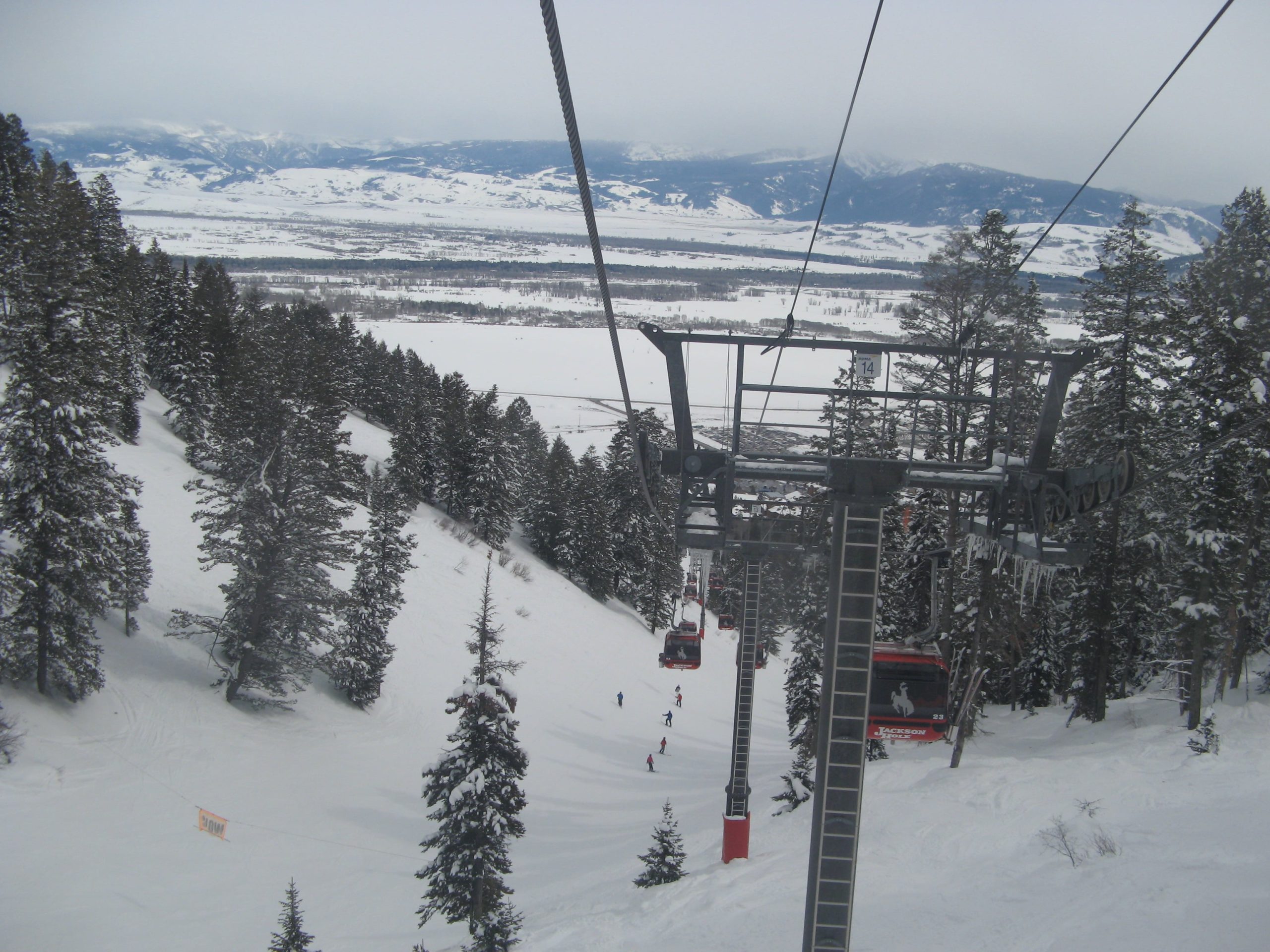
Additionally, the Bridger Gondola and The Bridger Center were constructed along with new intermediate trails, opening in the Winter of 1997/1998. Teton County would ultimately approve the Teton Village Master Plan in the spring of 1998 and by the Winter of 1999 the backcountry gate system was employed, effectively opening up thousands of acres of backcountry to all.
The Modern Era
Aside from JHMR, Teton Village was rapidly expanding at the turn of the century. Constructed between the years 2000 and 2009 were the Snake River Lodge & Spa, The Teton Club, Teton Mountain Lodge, the Four Seasons, and Hotel Terra. In 2006, after 40 years of service, the famed Aerial Tram was shut down to the public in order to build a newer, bigger, and faster version utilized today. That same year the Headwall Deli and Rendezvous Restaurant at the top of the Bridger gondola were built, now known as Piste.
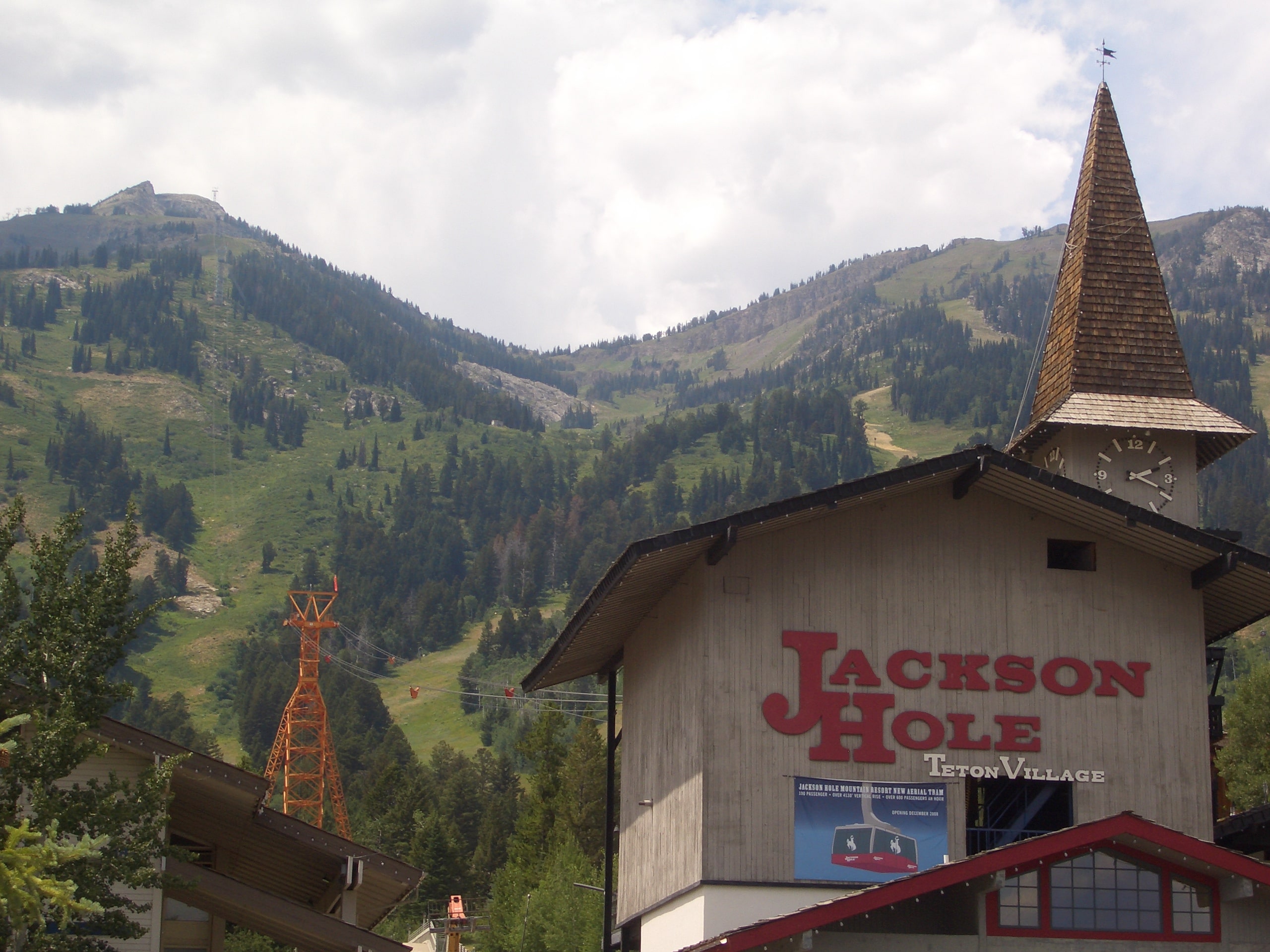
The $32 million dollar tram investment by resort ownership came during the middle of a recession and essentially rescued the troubled resort from the jaws of bankruptcy. The new improved tram opened just two years after construction and carries 100 passengers and rises 4,139 vertical feet in 9 minutes, boasting the longest continuous vertical elevation of any lift in the U.S.
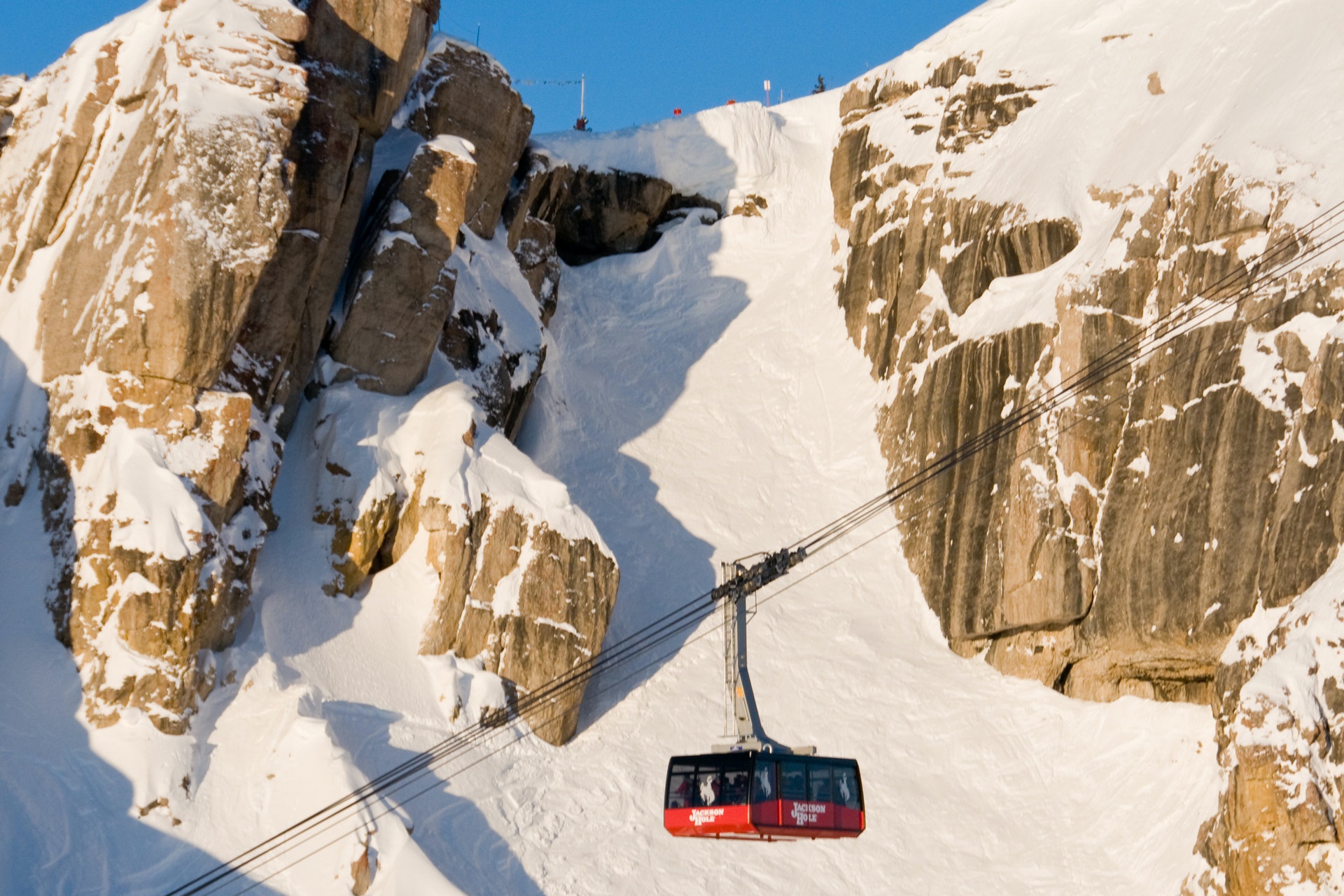
The 2007/08 season became Jackson Hole’s most successful season ever with 480,000+ skier visits and over 600 inches of snowfall. Since then, even more, chairlifts have been added including the Casper, Marmot, and Teton lifts and the Sweetwater Gondola. To honor its 50th Anniversary, the JHMR added the Teton Lift during the winter of 2015 servicing intermediate and expert skiing on the north side of JHMR between the already-existing Casper and Après Vous lifts.
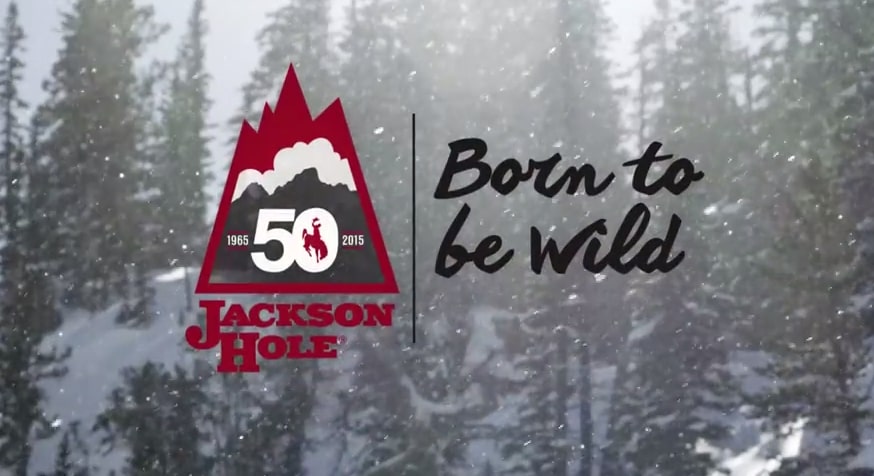
According to Jackson Hole Moutain Resort: JHMR is a values-led, family-owned, iconic mountain destination with the purpose of enriching the lives of its guests and employees. With an enduring commitment to the surrounding landscape, wildlife, and authentic community character, it strives to live by its values by reducing environmental impact and in doing so runs its buildings, lifts, and snowmaking on wind energy.
Under their stewardship, the Kemmerer family has guided the resort’s development toward what it is today. Sharing the passion of the original founding fathers and matching it with their business savvy and commitment to seeing the dream through to completion. The Kemmerers have been mindful of keeping Jackson Hole Moutain Resort true to its core identity, its humble ethos, and the belief in its authentic western sensibility. The evolution continues to this day.
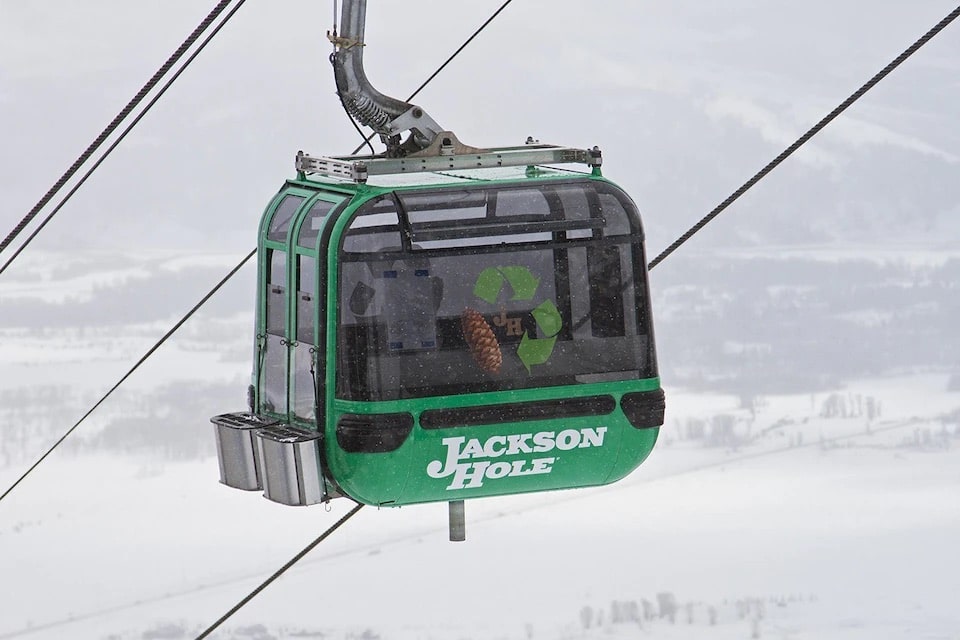
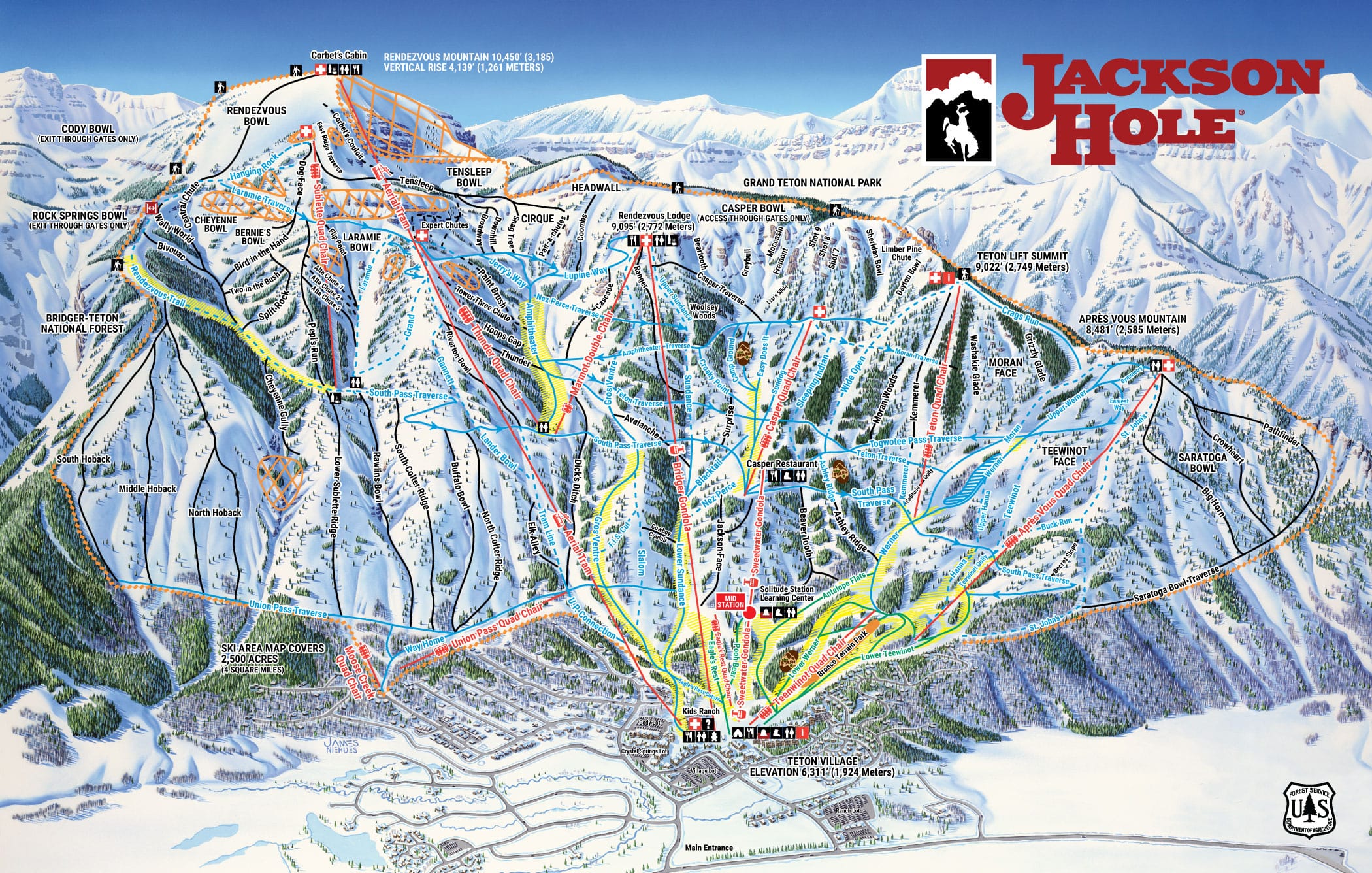
One thought on “Deep Dive: A History of Jackson Hole Mountain Resort, WY”